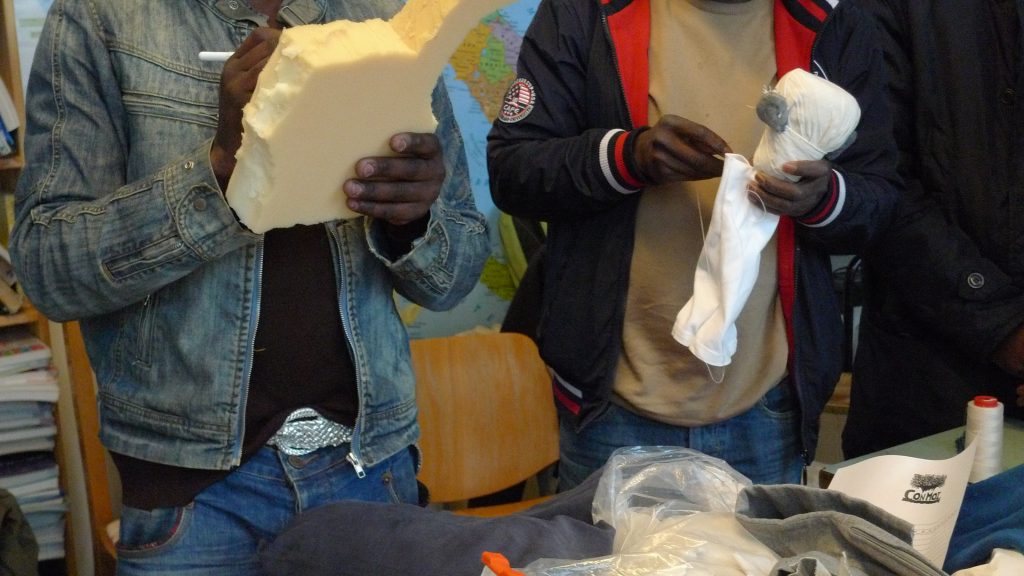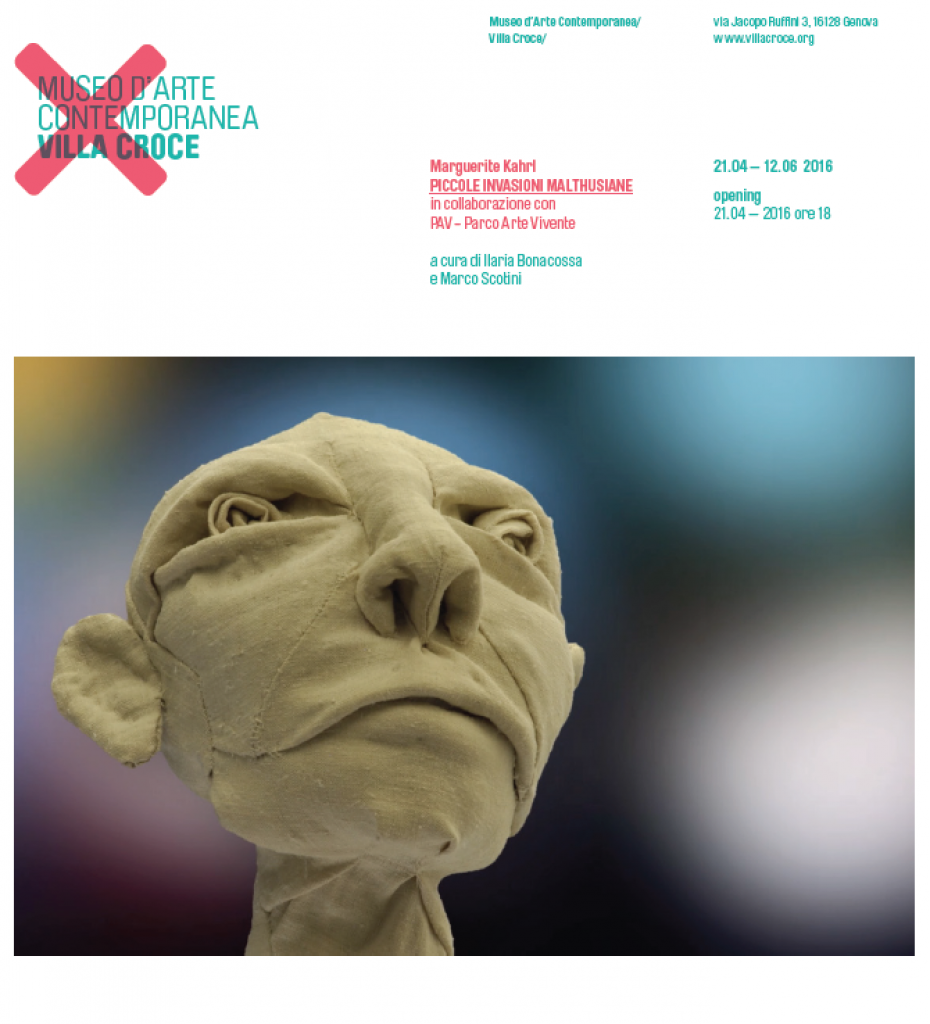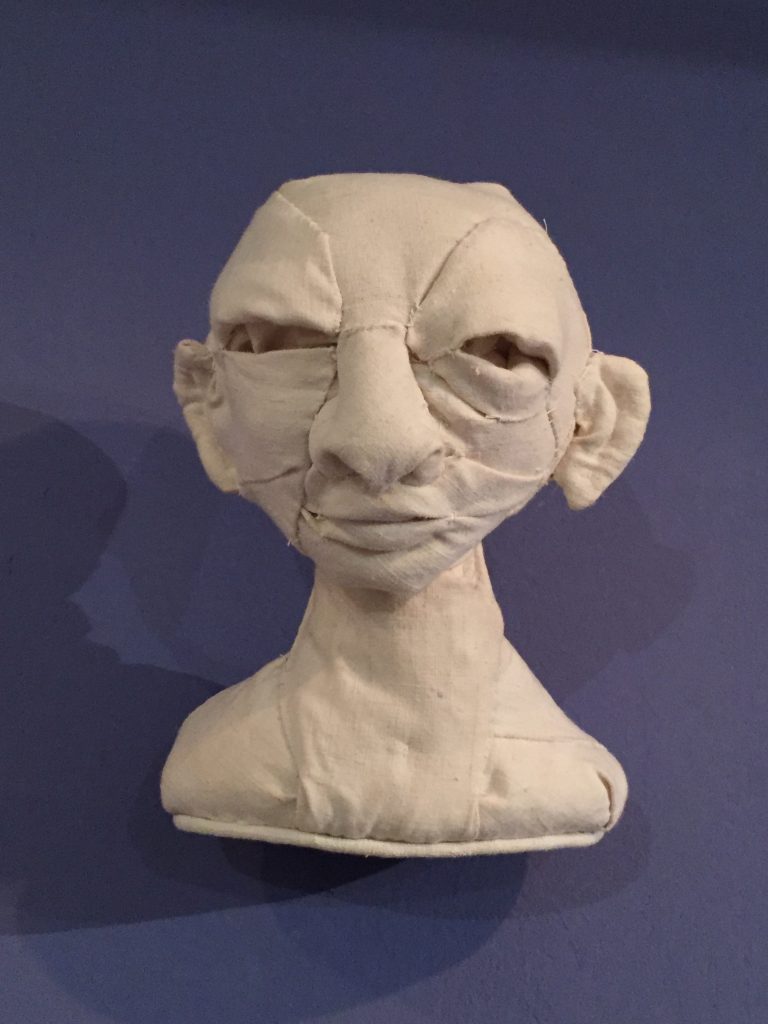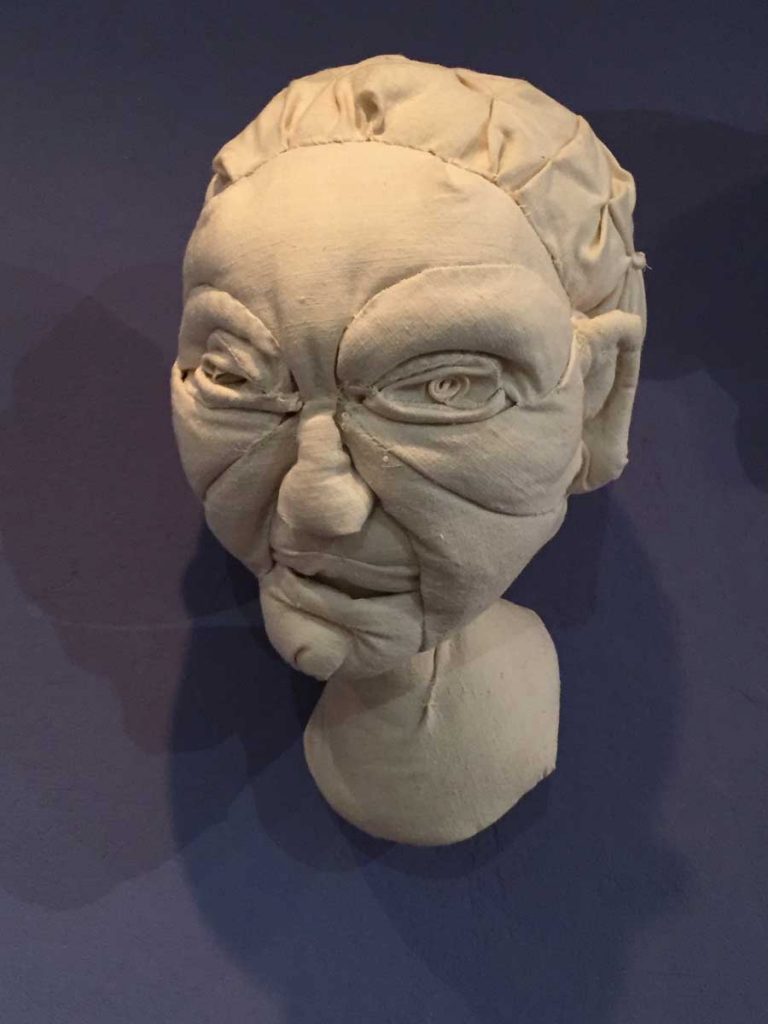Marguerite Kahrl, Little Malthusian Invasions
curated by Ilaria Bonacossa and Marco Scotini with Anna Lovecchio
Museo d’Arte Contemporanea Villa Croce, in collaboration with PAV – Parco Arte Vivente, Torino
Villa Croce presents Little Malthusian Invasions, a solo show of Marguerite Kahrl that features two bodies of work by the American artist: the ongoing Noble Savages series of drawings, sculptures and videos in addition to a selection of relational objects from Con MOI, a collaborative project developed in the area of the former Olympic village in Turin. For the opening day a performance On nature of matter will take place during which the artist will be constructing a sculpture accompanied by the sound ‘objects’ created by the composer Giuseppe Gavazza.
Marked by a longtime commitment to political activism, the artistic research of Marguerite Kahrl is deeply influenced by the principles of permaculture, a philosophy of land use and design, conceived in the 1970s, which proposes sustainable models of growth based on resilience, complexity, and the self-regulating balance found in natural ecosystems. The ethics of close observation of nature and earth care are embraced by the artist as a radical alternative to the dominant mechanisms of exploitation and consumption that cause waste, excess, and destruction in the contemporary world.
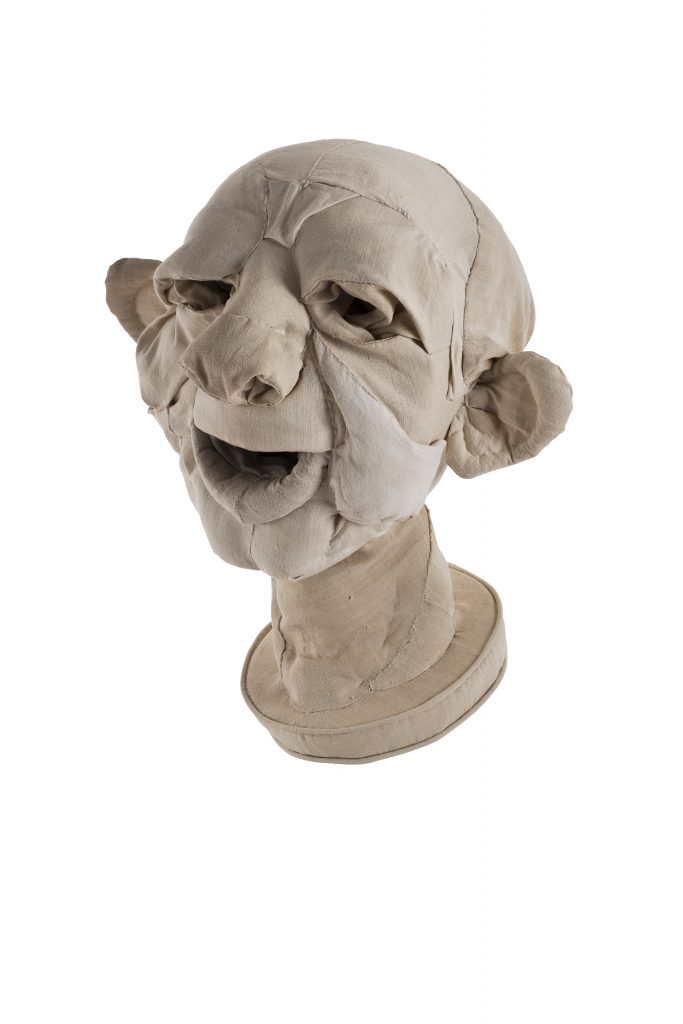
Hemp, linen, batting, thread, wood and stuffing.
1’30” directed by: Marguerite Kahrl, music by: Giuseppe Gavazza, video: Marco Mion titles: Seungjun Jeong
The subjects of her video series entitled ‘Malthusian Matter, the ecology of little invasions’ are Kahrl’s Noble Savages, soft busts representing grotesque characters, halfway between tender and monstrous, whose iconography is derived from Los Caprichos by Francisco Goya, the renowned series of etchings published in 1799 as a critique to the decline of reason and the widespread corruption at the end of the Enlightenment. The title makes reference to the expression originally coined by the English poet John Dryden (1631-1700) and made famous by J.J. Rousseau (1712-1778) who idealized the “noble savage” in the state of nature as an innately pure and good human being, uncontaminated by civilization.
Except for the recent bronze casts, Kahrl’s sculptures are made with hemp, linen, and cotton, natural elements that are connected to the history and the environment of the Cavanese area where the artist has been living since 2002. The hemp plant has played a major role in the economic development of the region where it has been cultivated to provide textiles, paper, oil, building materials, and animal feed. The distinctive expressive qualities of the hemp fabrics, raw but also soft to the touch and durable, confer an aura of domesticity and resilience to the hand-sewn puppets, playful hybrid creatures placed on slender pedestals that, as Lucy Lippard observes, “illuminate the eternal contradictions of the human condition.”
The exhibition also includes videos, a timeline and relational objects realized within the Con MOI project, an informal group of migrants and Italian citizens engaged with a range of practices, from sharing time and food to activating forms of reciprocal attention, aimed at forging a supportive community. The group is named after the MOI, the former Mercato Ortofrutticolo all’Ingrosso (wholesale fruit and vegetable market), where the prefabricated structures built for the 2006 Winter Olympics are presently occupied by over a thousand refugees from different geographical origins. Thanks to Kahrl and other participants, the Con MOI group addresses the criticalities of such a context by setting in motion relational strategies that promote food-sharing as well as the transformation from the redistribution of material and cultural resources.
